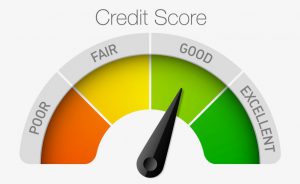 Establishing credit is a crucial financial milestone that opens doors to various opportunities, from securing loans to renting an apartment. If you’re new to the world of credit, navigating the process might seem daunting. However, with the right knowledge and responsible practices, you can build a strong credit history from the ground up. In this guide, we’ll walk you through the steps to establish credit and set yourself on the path to a healthy financial future.
Establishing credit is a crucial financial milestone that opens doors to various opportunities, from securing loans to renting an apartment. If you’re new to the world of credit, navigating the process might seem daunting. However, with the right knowledge and responsible practices, you can build a strong credit history from the ground up. In this guide, we’ll walk you through the steps to establish credit and set yourself on the path to a healthy financial future.
Step 1: Understand the Basics of Credit
Before diving in, it’s important to grasp the fundamentals of credit. Credit is a measure of your ability to borrow money and repay it over time. Lenders use your credit history to assess your risk as a borrower. A positive credit history can lead to lower interest rates and better financial opportunities.
Step 2: Check Your Credit Report
If you’re just starting out, you may not have a credit history yet. However, it’s a good idea to request a free copy of your credit report to ensure there are no errors or inaccuracies. You can obtain a free credit report annually from each of the major credit reporting agencies.
Step 3: Open a Bank Account
Having a checking or savings account is the foundation of your financial journey. It establishes a relationship with a financial institution and serves as a basis for potential lenders to gauge your financial stability.
Step 4: Apply for a Secured Credit Card
A secured credit card is an excellent starting point for building credit. With a secured card, you’ll need to make a security deposit, which acts as your credit limit. Use the card responsibly by making small purchases and paying off the balance in full and on time each month.
Step 5: Become an Authorized User
If you have a family member or close friend with good credit, ask if they’re willing to add you as an authorized user on their credit card. Their positive payment history can reflect on your credit report and help you establish credit.
Step 6: Apply for a Student or Starter Credit Card
Many banks offer student or starter credit cards designed for individuals with limited or no credit history. These cards often have lower credit limits and may come with rewards or benefits tailored to beginners.
Step 7: Pay Bills on Time
Timely payment of bills, including credit card bills, utility bills, and rent, is critical for building credit. Late payments can negatively impact your credit score, so set up reminders or automatic payments to ensure you never miss a due date.
Step 8: Keep Credit Utilization Low
Credit utilization refers to the percentage of your available credit that you’re using. Aim to keep this ratio below 30%. For example, if you have a credit limit of $1,000, try to keep your balance below $300.
Step 9: Diversify Your Credit Mix
Having a mix of credit types, such as credit cards, installment loans, and student loans, can positively influence your credit score. However, only take on debt you can manage responsibly.
Step 10: Monitor Your Credit Regularly
Keep an eye on your credit report and score regularly to track your progress. Monitoring can also help you catch any inaccuracies or fraudulent activity.
Conclusion
Establishing credit is a gradual process that requires patience, discipline, and responsible financial habits. By following this step-by-step guide, you can start building a solid credit history from scratch. Remember that the key to successful credit building is making consistent, on-time payments, keeping your credit utilization low, and using credit as a tool to enhance your financial well-being. With time and dedication, you’ll be well on your way to achieving a strong credit profile.